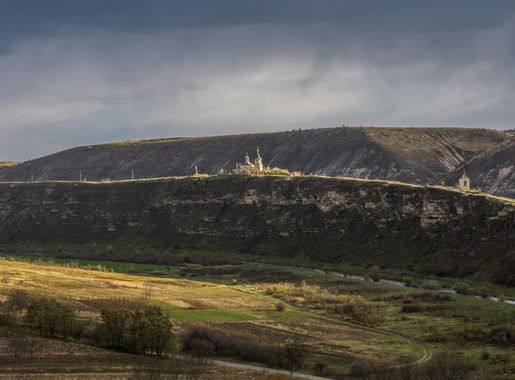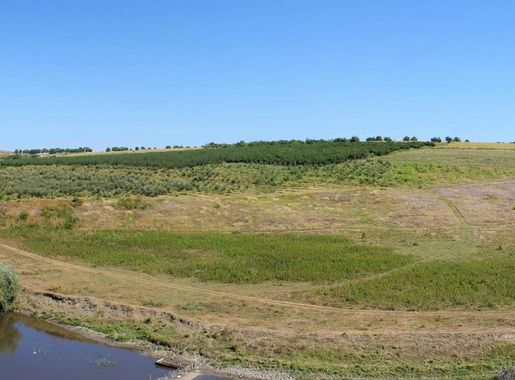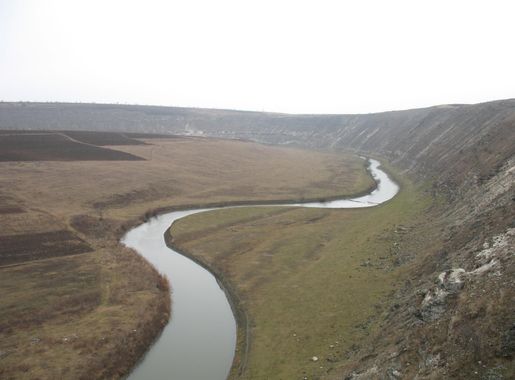
The Ancient Wonder: Cave Monastery of Old Orhei
Discover the Cave Monastery of Old Orhei in Moldova, an ancient sanctuary nestled in limestone cliffs, offering a serene retreat and a glimpse into medieval monastic life.
Nestled in the breathtaking natural landscape of Moldova, the Cave Monastery of Old Orhei is a treasure trove of history and spirituality. This ancient monastery, carved into the limestone cliffs, offers a unique glimpse into the lives of monks who sought solitude and serenity. The picturesque setting, overlooking the Răut River, adds to its mystique and allure. As you explore the monastery, you'll be taken back in time to the 13th century. The intricate carvings and frescoes on the walls speak volumes about the rich cultural heritage of the region. The cool, dimly lit chambers create an atmosphere of quiet reflection and peace. This is a place where history and nature come together seamlessly. Beyond the monastery itself, the surrounding area of Old Orhei is equally captivating. The open-air museum showcases traditional Moldovan rural life, with reconstructed homes, churches, and other historical structures. A visit to the Cave Monastery is not just a trip back in time, but also a journey into the heart of Moldova's cultural and spiritual identity.
Local tips in Cave Monastery in Old Orhei
- Visit early in the morning to avoid crowds and enjoy the tranquility.
- Wear comfortable walking shoes as the terrain can be uneven.
- Bring a flashlight to explore the darker chambers of the monastery.
- Don't miss the open-air museum in Old Orhei for a broader cultural experience.
- Check the weather forecast; the area is best enjoyed on a clear day.
The Ancient Wonder: Cave Monastery of Old Orhei
Nestled in the breathtaking natural landscape of Moldova, the Cave Monastery of Old Orhei is a treasure trove of history and spirituality. This ancient monastery, carved into the limestone cliffs, offers a unique glimpse into the lives of monks who sought solitude and serenity. The picturesque setting, overlooking the Răut River, adds to its mystique and allure. As you explore the monastery, you'll be taken back in time to the 13th century. The intricate carvings and frescoes on the walls speak volumes about the rich cultural heritage of the region. The cool, dimly lit chambers create an atmosphere of quiet reflection and peace. This is a place where history and nature come together seamlessly. Beyond the monastery itself, the surrounding area of Old Orhei is equally captivating. The open-air museum showcases traditional Moldovan rural life, with reconstructed homes, churches, and other historical structures. A visit to the Cave Monastery is not just a trip back in time, but also a journey into the heart of Moldova's cultural and spiritual identity.
When is the best time to go to Cave Monastery in Old Orhei?
Iconic landmarks you can’t miss
OrheiLand
Discover the thrill of OrheiLand, Moldova's premier amusement park, where fun and adventure await for the whole family!
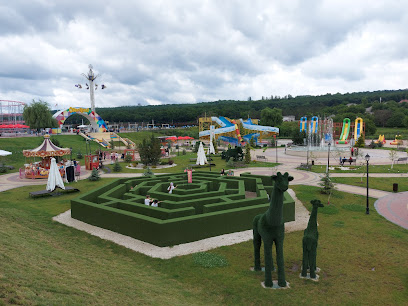
Curchi Monastery
Explore the tranquility and spiritual beauty of Curchi Monastery in Orhei, Moldova, a hidden gem steeped in history and serenity.
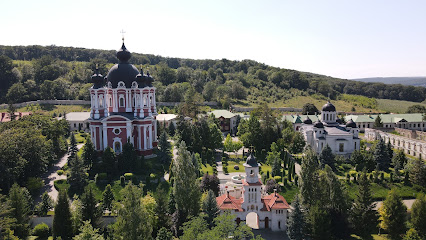
Orheiul Vechi Cultural and Natural Reserve
Explore the breathtaking landscapes and rich history of Orheiul Vechi Cultural and Natural Reserve, a unique gem in Moldova.

Cave Monastery
Discover the spiritual and historical richness of the Cave Monastery in Butuceni, a captivating destination nestled in Moldova's picturesque landscape.
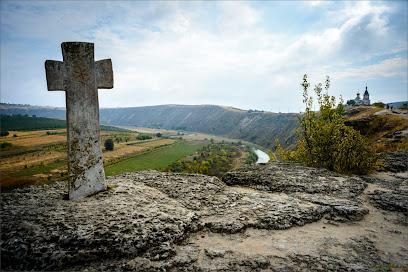
Old Orhei
Explore the breathtaking landscapes and rich history of Old Orhei, Moldova's must-visit archaeological gem and spiritual sanctuary.
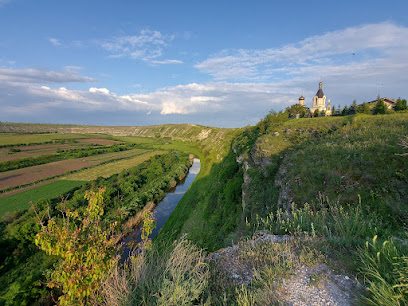
Bosie Cave Monastery
Explore the serene Bosie Cave Monastery in Moldova, a hidden gem that blends spirituality with breathtaking natural landscapes.
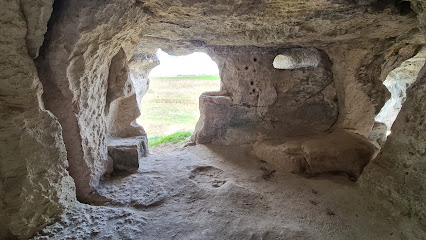
Old Orhei Fort
Discover the enchanting Old Orhei Fort in Moldova, a historic fortress offering breathtaking views and rich cultural heritage amidst stunning landscapes.
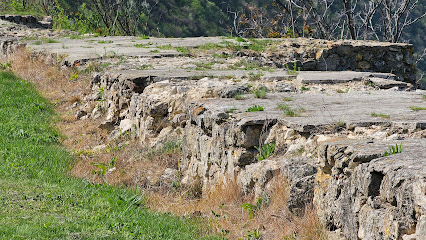
Unmissable attractions to see
Eroii Patriei Park
Explore Eroii Patriei Park in Chișinău, a serene memorial park blending beauty with historical significance, perfect for relaxation and reflection.
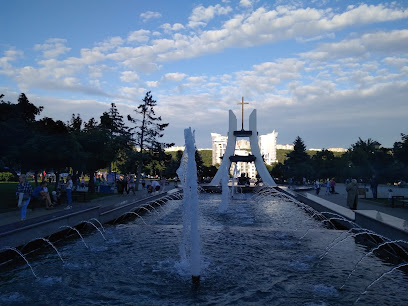
Orheiul Vechi Cultural and Natural Reserve
Explore the breathtaking landscapes and rich history of Orheiul Vechi Cultural and Natural Reserve in Moldova, a perfect blend of nature and culture.
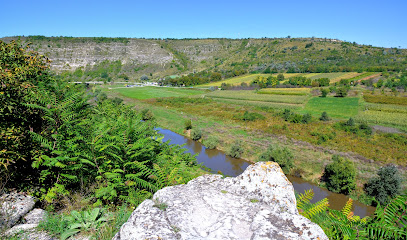
Eco-Resort Butuceni
Experience the magic of nature and Moldovan culture at Eco-Resort Butuceni - a perfect escape for relaxation and adventure.
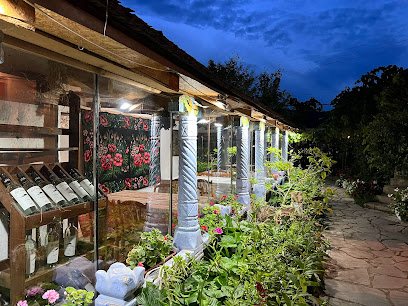
Parcul Ivanos
Explore the lush landscapes and serene atmosphere of Parcul Ivanos, a picturesque city park in Orhei, Moldova, perfect for relaxation and leisure.
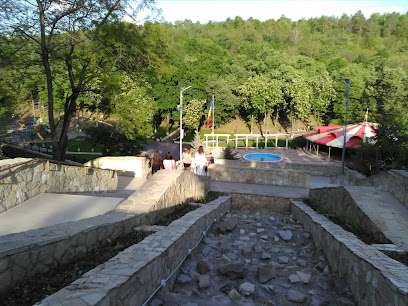
Old Orhei
Explore Old Orhei, Moldova: A breathtaking archaeological site with stunning views and rich cultural heritage that embodies the spirit of ancient civilizations.

Bosie Cave Monastery
Explore the serene Bosie Cave Monastery in Moldova, a historical treasure with breathtaking frescoes and peaceful surroundings.

Podul Piatra
Explore the stunning landscapes and rich history at Podul Piatra, a captivating bridge in Lazo, Moldova, perfect for relaxation and photography.
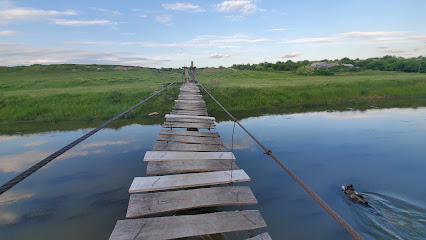
Essential places to dine
Orheiul Vechi Cultural and Natural Reserve
Explore Orheiul Vechi: A breathtaking blend of natural beauty and rich archaeological heritage in Moldova.
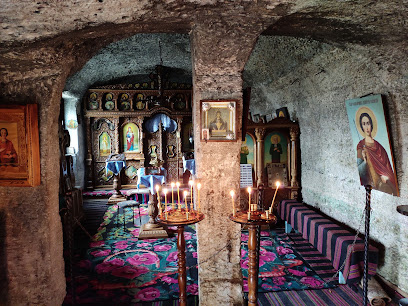
Epoca de Piatră
Experience authentic Moldovan cuisine at Epoca de Piatră in Brăneşti—where tradition meets modern culinary artistry.
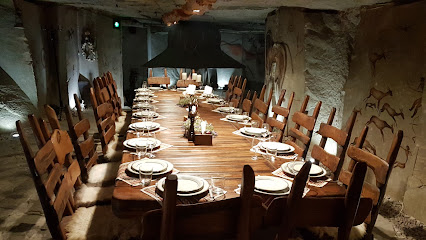
Villa Etnica
Experience authentic Moldovan cuisine at Villa Etnica in Butuceni - a culinary journey through tradition and flavor.
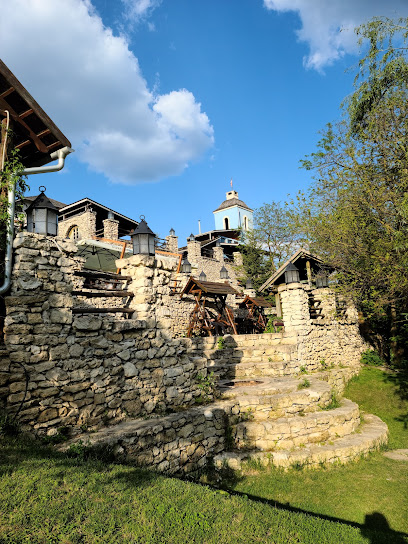
Eco-Resort Butuceni
Discover Eco-Resort Butuceni: A sustainable haven offering exquisite Moldovan cuisine and breathtaking natural beauty.
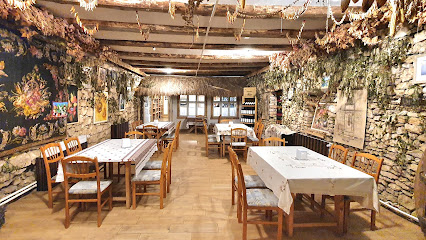
Doi Haiduci
Experience family-friendly dining and relaxation at Doi Haiduci, where Romanian cuisine meets cozy accommodations in picturesque Moldova.
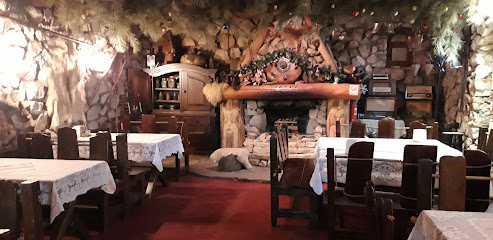
Dolce Vita
Savor the taste of Italy at Dolce Vita – where every pizza tells a story in Orhei, Moldova.
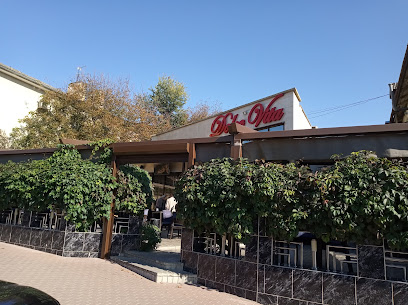
Acropolis
Discover Acropolis in Orhei: Where Authentic Moldovan Cuisine Meets Warm Hospitality for an Unforgettable Dining Experience.
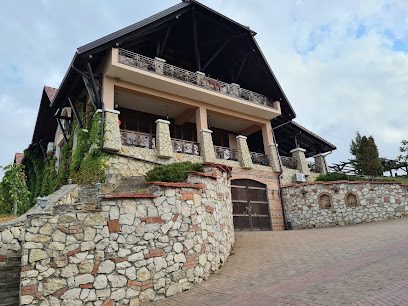
Chateau Vartely
Explore Chateau Vartely: A Premier Winery in Moldova Offering Exquisite Wines and Culinary Delights Amidst Breathtaking Vineyards.
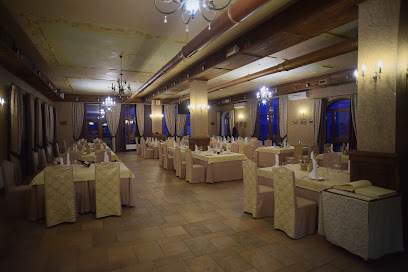
Cave Monastery
Explore the serene beauty and rich history of Butuceni's Cave Monastery - a hidden gem nestled in Moldova's picturesque landscapes.
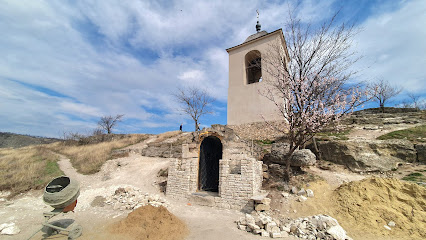
Stejăriş
Discover authentic Moldovan cuisine at Stejăriş – where every dish tells a story of tradition and flavor.
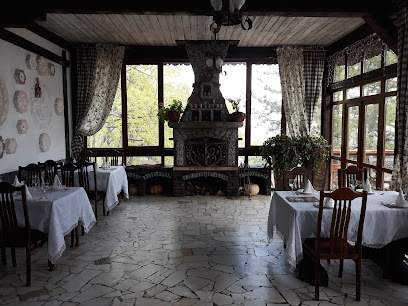
Casa din Lunca Pension
Discover serenity at Casa din Lunca Pension - your cozy retreat in Trebujeni, Moldova with stunning views and delightful local cuisine.
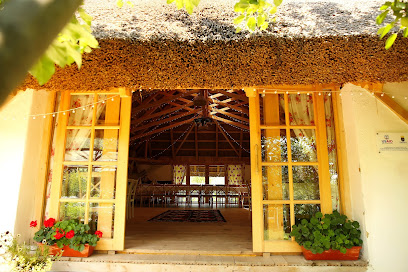
Select Lounge
Discover the best of Moldovan cuisine at Select Lounge in Orhei – where flavor meets elegance in every dish.
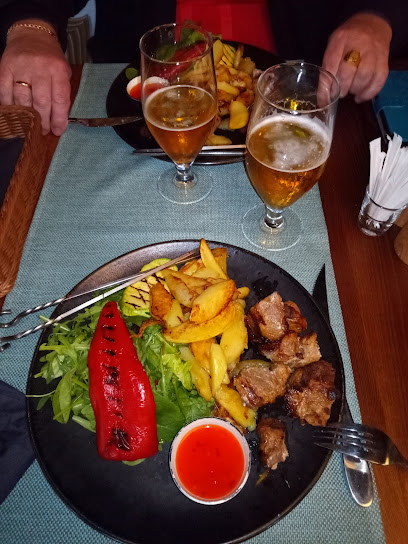
Hotel Codru
Discover comfort and local charm at Hotel Codru in Orhei - your perfect base for exploring Moldova's rich heritage.
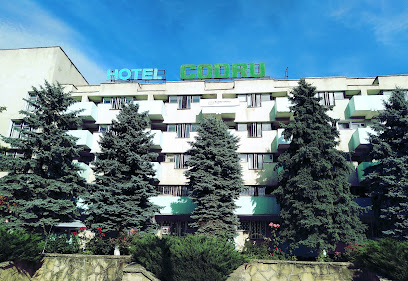
Resedinta Rotundu
Discover tranquility at Resedinta Rotundu: A charming bed & breakfast in Butuceni offering authentic Moldovan hospitality and delicious local cuisine.

Vila Roz
Discover tranquility at Vila Roz in Trebujeni, Moldova—an enchanting guest house surrounded by breathtaking landscapes and rich culture.
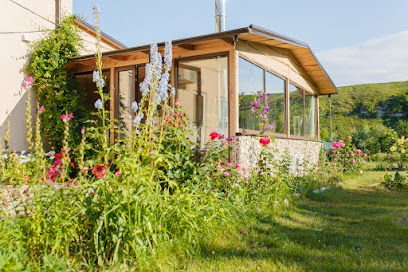
Markets, malls and hidden boutiques
OrheiLand
Experience the joy and excitement of OrheiLand, Moldova's premier amusement park, offering thrilling rides, cultural experiences, and beautiful scenery.
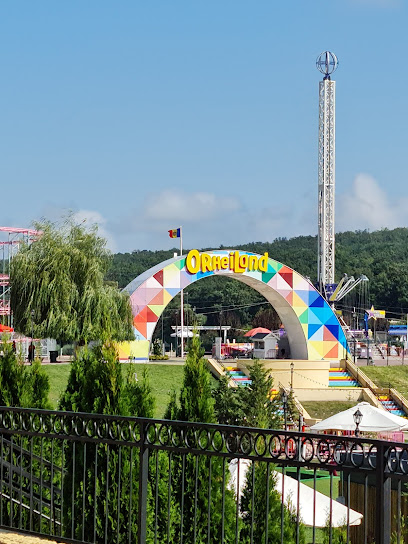
Curchi Monastery
Discover the beauty and tranquility of Curchi Monastery, a historic gem nestled in the heart of Moldova, perfect for reflection and cultural exploration.
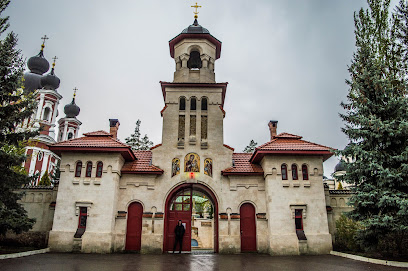
Orheiul Vechi Cultural and Natural Reserve
Experience the breathtaking landscapes and rich history of Orheiul Vechi Cultural and Natural Reserve in the heart of Moldova, a true gem for nature lovers and history enthusiasts.
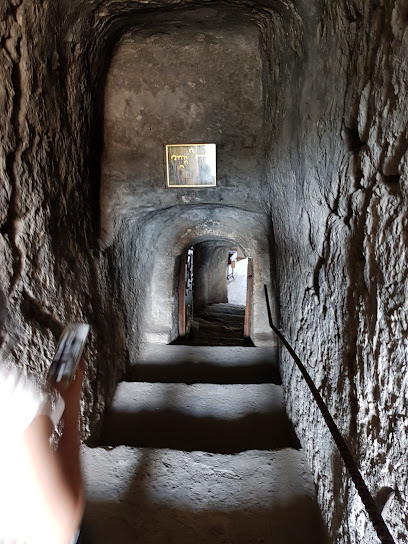
Eco-Resort Butuceni
Experience the beauty and flavors of Moldova at Eco-Resort Butuceni, where nature and culinary delight meet in perfect harmony.
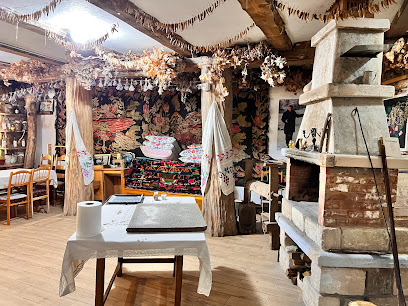
Cave Monastery
Discover the ancient Cave Monastery in Butuceni, Moldova—a spiritual haven nestled in stunning natural beauty, rich in history and serene landscapes.
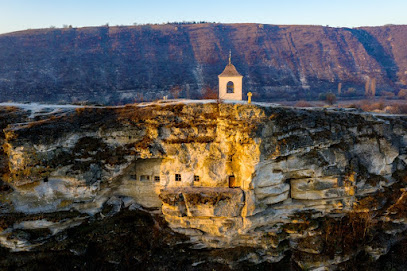
Eco Vila
Experience the beauty and tranquility of Eco Vila in Old Orhei, Moldova, a perfect retreat for nature lovers and culture enthusiasts alike.
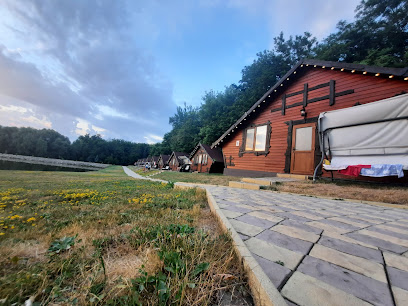
Casa din Lunca Pension
Discover the charm of Trebujeni at Casa din Lunca, a cozy bed & breakfast offering delicious traditional Moldovan cuisine and warm hospitality.
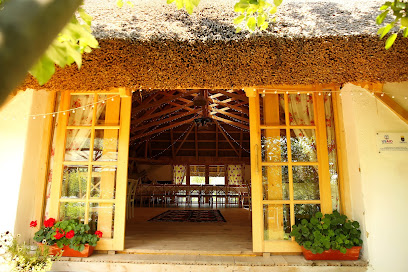
Resedinta Rotundu
Experience the warm hospitality and stunning landscapes of Butuceni at Resedinta Rotundu, a charming bed and breakfast in Moldova.
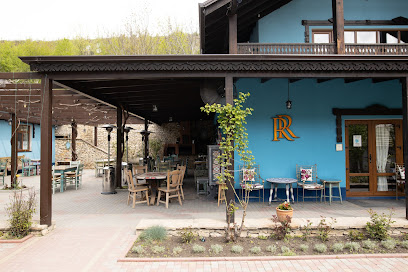
Vila Roz
Experience the tranquility and cultural richness of the Orhei District at Vila Roz, the perfect guest house for your Moldovan adventure.

Old Orhei
Explore Old Orhei, a breathtaking blend of history and nature in Moldova, showcasing ancient ruins and stunning landscapes.
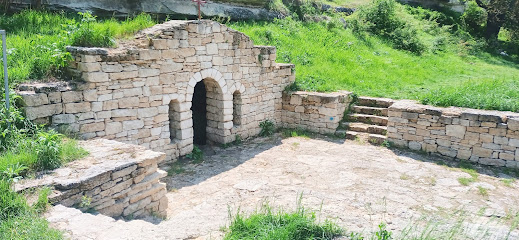
Valea Stancii
Experience the tranquil beauty and exceptional hospitality of Valea Stancii, a hidden gem in Moldova's Trebujeni region.
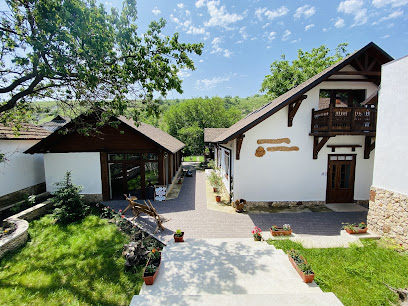
Bosie Cave Monastery
Discover the historical and spiritual essence of Bosie Cave Monastery in Moldova, a breathtaking site carved into rock and surrounded by stunning natural beauty.
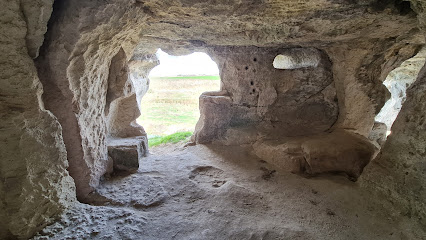
Restaurant ”de Vis”
Discover the flavors of Moldova at Restaurant 'de Vis' in Trebujeni, where culinary excellence meets breathtaking views.
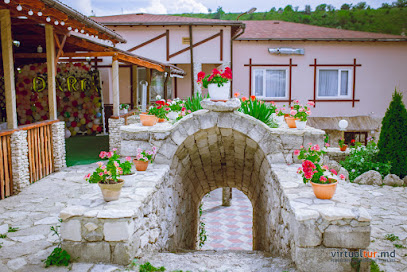
Casa de sub Stinca Pension
Experience the charm and tranquility of Casa de sub Stinca Pension in Trebujeni, Moldova - a perfect escape into nature and culture.
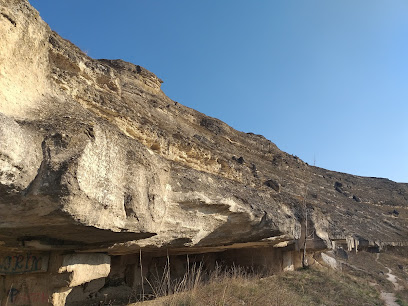
Agro Pensiunea Casa Verde
Discover the tranquil charm of Agro Pensiunea Casa Verde in Trebujeni, Moldova, a perfect blend of comfort, culture, and stunning natural beauty.
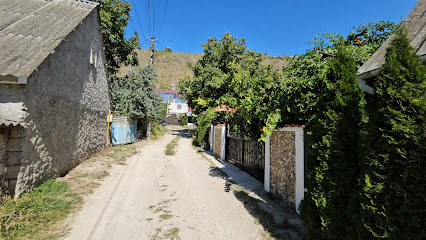
Essential bars & hidden hideouts
Eco-Resort Butuceni
Experience the exquisite flavors and stunning views at Eco-Resort Butuceni, Moldova's charming dining destination.
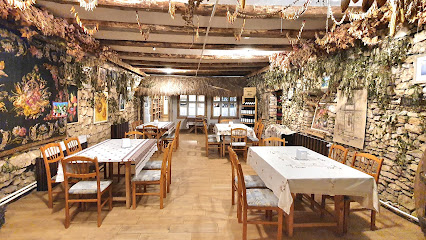
Chateau Vartely
Discover the exquisite wines and stunning landscapes of Chateau Vartely, a premier winery in Moldova offering a unique cultural experience.
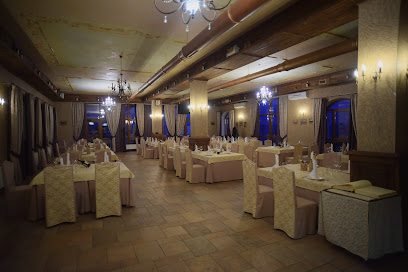
Cave Monastery
Experience the tranquil beauty and rich history of the Cave Monastery in Butuceni, a unique spiritual retreat carved into the cliffs of Moldova.
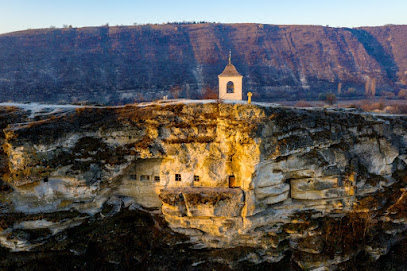
Select Lounge
Experience the best of Moldovan and international cuisine at Select Lounge in Orhei, a top destination for food lovers.
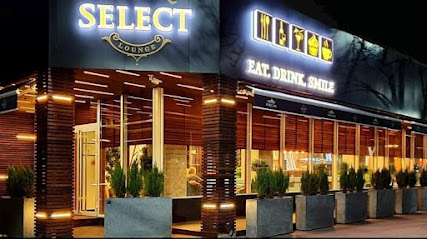
Fan Kebab
Discover the authentic taste of Moldova at Fan Kebab, where delicious shawarma meets friendly service in a cozy setting.
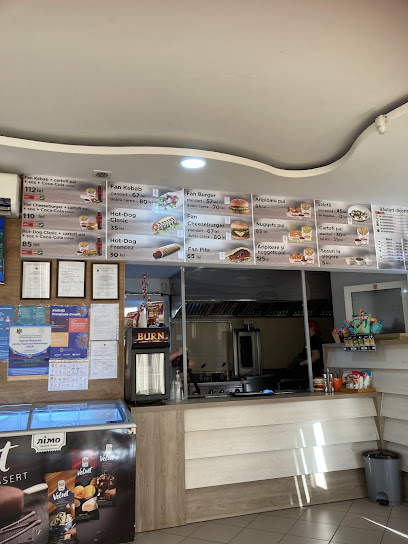
Old Orhei
Explore the historic landscapes of Old Orhei, Moldova, featuring ancient monasteries and breathtaking natural beauty.
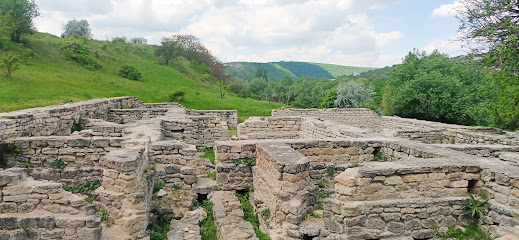
Bosie Cave Monastery
Explore the serene Bosie Cave Monastery in Moldova, a spiritual retreat nestled in nature, rich in history and architectural beauty.
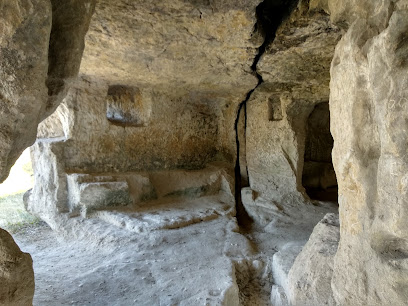
Restaurant ”de Vis”
Discover exquisite seafood and authentic Moldovan cuisine at Restaurant 'de Vis' in picturesque Trebujeni.
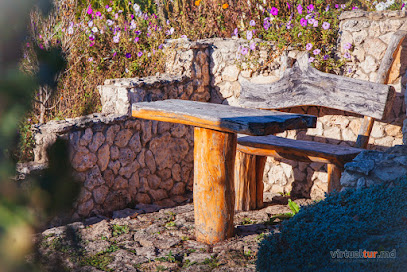
Orhei
Experience the vibrant nightlife and rich culture of Orhei, Moldova, a charming town perfect for tourists seeking adventure and relaxation.

Local Phrases about Cave Monastery in Old Orhei
-
- HelloSalut
[sa-ˈlut] - GoodbyeLa revedere
[la re.veˈde.re] - YesDa
[da] - NoNu
[nu] - Please/You're welcomeTe rog
[te roɡ] - Thank youMulțumesc
[mul.t͡suˈmesk] - Excuse me/SorryScuzați-mă
[sku.zaˈt͡sɨ mə] - How are you?Ce mai faci?
[t͡ʃe maɪ faˈt͡ʃi] - Fine. And you?Bine. Și tu?
[biˈne ʃi tu] - Do you speak English?Vorbiți engleză?
[vorˈbit͡si enˈɡle.zə] - I don't understandNu înțeleg
[nu ɨnˈt͡se.leɡ]
- HelloSalut
-
- I'd like to see the menu, pleaseAș dori să văd meniul, vă rog
[aʃ ˈdo.ri sə vad meˈni.ul və roɡ] - I don't eat meatNu mănânc carne
[nu mɨˈnɨŋk ˈkar.ne] - Cheers!Noroc!
[ˈno.rok] - I would like to pay, pleaseAș dori să plătesc, vă rog
[aʃ ˈdo.ri sə pləˈtesk və roɡ]
- I'd like to see the menu, pleaseAș dori să văd meniul, vă rog
-
- Help!Ajutor!
[a.ʒuˈtor] - Go away!Du-te!
[du.te] - Call the Police!Sună la Poliție!
[su.nə la po.ˈlit͡si.e] - Call a doctor!Sună un doctor!
[su.nə un dokˈtor] - I'm lostM-am pierdut
[mam ˈpjer.dut] - I'm illSunt bolnav
[sunt bolˈnav]
- Help!Ajutor!
-
- I'd like to buy...Aș dori să cumpăr...
[aʃ ˈdo.ri sə kumˈpar] - I'm just lookingDoar mă uit
[do.ar mə wit] - How much is it?Cât costă?
[kɨt kosˈtə] - That's too expensiveEste prea scump
[ˈes.te pre̯a skump] - Can you lower the price?Puteți să scădeți prețul?
[puˈte̯t͡s sə ˈskə.de̯t͡s pre̯tsul]
- I'd like to buy...Aș dori să cumpăr...
-
- What time is it?Cât este ceasul?
[kɨt ˈes.te t͡ʃe̯a.sul] - It's one o'clockEste ora unu
[ˈes.te o.ra unu] - Half past (10)Jumătate (la zece)
[ʒu.məˈta.te la ˈze.t͡ʃe] - MorningDimineața
[di.miˈne̯at͡sa] - AfternoonDupă-amiază
[du.pə a.miˈazə] - EveningSeara
[ˈse̯a.ra] - YesterdayIeri
[ˈjerj] - TodayAstăzi
[asˈtəzj] - TomorrowMâine
[mɨˈi.ne] - 1Unu
[ˈu.nu] - 2Doi
[doj] - 3Trei
[trej] - 4Patru
[ˈpatru] - 5Cinci
[ˈt͡ʃint͡ʃ] - 6Șase
[ʃa.se] - 7Șapte
[ʃap.te] - 8Opt
[opt] - 9Nouă
[no.uə] - 10Zece
[ˈt͡se.t͡ʃe]
- What time is it?Cât este ceasul?
-
- Where's a/the...?Unde este unul/o...
[un.de es.te uˈnul/o] - What's the address?Care este adresa?
[ka.re es.te aˈdresə] - Can you show me (on the map)?Puteți să-mi arătați (pe hartă)?
[puˈte̯t͡s sə.mi aˈrəta.ʦi pe harˈtə] - When's the next (bus)?Când este următorul (autobuz)?
[kɨnd es.te ur.ˈmə.to.rul auˈto.buz] - A ticket (to ....)Un bilet (către ....)
[un biˈlet kəˈtre]
- Where's a/the...?Unde este unul/o...
History of Cave Monastery in Old Orhei
-
The Cave Monastery in Old Orhei, known as Orheiul Vechi, traces its origins back to the 13th century. Carved into the limestone cliffs overlooking the Răut River, the monastery was built by Orthodox monks seeking solitude and a place for deep spiritual practice. The location provided not only seclusion but also a strategic defensive position against invading forces.
-
During the 14th century, the region, including the Cave Monastery, faced multiple invasions by Mongol forces. These invasions led to the fortification of the monastery and the surrounding area. Despite the turmoil, the monks continued their religious practices, making the monastery a symbol of resilience and faith.
-
In the 15th century, the Cave Monastery saw significant development under the Principality of Moldavia. The reigning prince, Stephen the Great, was a devout Christian and played a crucial role in the expansion and fortification of the monastery. This period also marked the construction of additional chapels and living quarters for the monks.
-
Throughout the 16th and 17th centuries, the Cave Monastery experienced periods of Ottoman control. While the Ottomans allowed the continuation of Christian practices, the monastery had to pay tributes and taxes. This era saw a blend of cultural influences, as evidenced by the architectural and artistic elements found within the monastery.
-
By the 18th century, the Cave Monastery began to decline due to political instability and frequent wars in the region. Many monks left the monastery, and several sections fell into disrepair. However, the site remained a place of pilgrimage for local Christians, preserving its religious significance.
-
During the Soviet occupation of Moldova in the 20th century, the Cave Monastery faced severe restrictions. Religious activities were suppressed, and many religious artifacts were confiscated or destroyed. The monastery was neglected and largely abandoned, but it remained a symbol of Moldovan heritage and identity.
-
Following the collapse of the Soviet Union, Moldova gained independence in 1991. This period marked a revival of the Cave Monastery, with restoration projects funded by both the state and private donors. Today, the monastery is not only a functioning place of worship but also a major tourist attraction, drawing visitors from around the world to its historic and spiritual ambiance.
Cave Monastery in Old Orhei Essentials
-
Cave Monastery in Old Orhei is located approximately 60 kilometers northeast of Chișinău, the capital of Moldova. The most convenient way to reach Old Orhei is by car, which takes about 1.5 hours from Chișinău. Alternatively, you can take a bus or minibus (marshrutka) from the Central Bus Station in Chișinău to the village of Trebujeni, which is the closest village to the Cave Monastery. From Trebujeni, it's a short walk to the monastery.
-
Once in Old Orhei, the best way to explore the area is on foot, as the main attractions are within walking distance. For those who prefer not to walk, local taxis are available. If you're traveling from Chișinău, renting a car can offer more flexibility. Public transport options like buses and minibuses connect Chișinău to Trebujeni, but they may not run frequently, so planning ahead is advisable.
-
The official currency in Moldova is the Moldovan Leu (MDL). Credit cards are accepted in some hotels, restaurants, and shops in Chișinău, but in rural areas like Old Orhei, it's best to carry cash. ATMs are available in Chișinău, but not in Old Orhei, so ensure you withdraw enough cash before traveling. It's also wise to have smaller denominations for easier transactions.
-
Old Orhei is generally a safe place for tourists. However, as with any travel destination, it's important to take standard safety precautions. Avoid walking alone at night in unfamiliar areas and keep an eye on your belongings, especially in crowded places. While there are no specific high-crime areas targeting tourists in Old Orhei, staying vigilant and aware of your surroundings is always advisable.
-
In case of emergency, dial 112 for immediate assistance in Moldova. The nearest medical facilities are in the larger towns and cities, with Chișinău offering the best healthcare options. It's recommended to have travel insurance that covers medical emergencies. For minor health issues, pharmacies can be found in nearby towns, but it's wise to carry basic medications with you.
-
Fashion: Do dress modestly when visiting religious sites; avoid wearing overly revealing clothing. Religion: Do show respect for religious customs; cover your head and shoulders when entering the monastery. Public Transport: Do be polite and give up your seat to elderly passengers; don't eat or drink on public transport. Greetings: Do greet locals with a friendly 'Bună ziua' (Good day); a handshake is also common. Eating & Drinking: Do try local dishes and accept food offerings graciously; don't refuse hospitality, as it may be considered impolite.
-
To experience Old Orhei like a local, consider visiting the local markets where you can buy fresh produce and traditional Moldovan goods. Engage with locals, who are often friendly and willing to share stories about the area's history and culture. Don't miss the opportunity to hike the scenic trails around the Răut River and explore the ancient cave monasteries. For a unique experience, try traditional Moldovan dishes such as mămăligă and sarmale at a local restaurant.
Nearby Cities to Cave Monastery in Old Orhei
-
Things To Do in Chișinău
-
Things To Do in Tiraspol
-
Things To Do in Iasi
-
Things To Do in Suceava
-
Things To Do in Vinnytsia
-
Things To Do in Focsani
-
Things To Do in Chernivtsi
-
Things To Do in Khmelnytskyi
-
Things To Do in Kropyvnytskyi
-
Things To Do in Kherson
-
Things To Do in Brasov
-
Things To Do in Cherkasy
-
Things To Do in Kryvyi Rih
-
Things To Do in Sighisoara
-
Things To Do in Constanta


